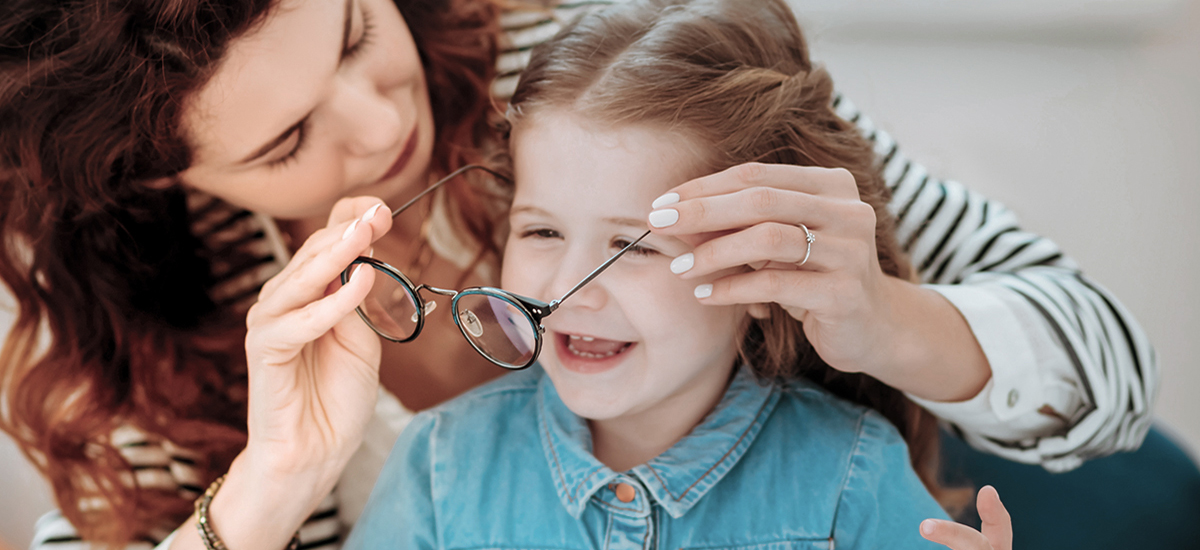What Are the Most Common Problems With Bifocal Glasses?

Presbyopia can affect anyone, so understanding the best types of eyewear to correct your symptoms should be a top priority the older you get. Over time, your eye doctor may suggest you try out bifocal glasses to get your vision to where it needs to be.
Bifocal glasses feature multifocal lenses with two distinct viewing areas, separated by a line. When you peer through the upper portion of the lens, you’ll have better distance vision. Near vision is for the bottom part of the lens.
But like any eyewear, bifocals are not immune to issues. Let’s discuss some common problems with bifocal glasses so that you can better prepare for wearing this form of vision correction.
Common Problems With Bifocal Glasses
Anytime you wear new glasses or contact lenses, a few issues can arise. Here are some problems with bifocal glasses:
#1: It can take a couple of weeks to adapt to bifocal glasses.
You may not get used to wearing your bifocals overnight. When you first get them, you may struggle to look through the right section of the lens. For instance, while reading, you’ll need to use the lower portion, while the upper portion is for driving.
Knowing the correct part of the lens to look through is crucial to giving you the vision correction you need, whether it’s distance or near vision, for different activities. With enough practice and use, it’ll become easier to wear your new eyewear, and any “image jumping” you might experience may soon come to an end.
To adjust to your new lenses, wear them all day or as often as you can. If you don’t wear your new glasses enough, it can make the adaptation period last even longer. It may only take up to a few weeks otherwise.
#2: The bifocal line could be too high.
Where should the line be on bifocals? It should be at the same level as your bottom eyelid. This means that if you glance down to read or sew, your eyes will gravitate toward the lower part of the lens, which gives you the best close-up vision.
If your bifocal line is too high, you might lack adequate distance vision. To lower your bifocal line, talk to the eye specialist who set you up with your glasses. They might recommend new lenses that would better suit your visual requirements.
And if you prefer not to have a visible line, consider progressive lenses. You’ll feel older while wearing them, without having to worry about the line through the center of your glasses.
Summary: Issues With Bifocal Glasses
If you require multiple prescriptions, such as to see near and far, your eye doctor may prescribe bifocals. This is a type of multifocal eyewear that changes the prescription depending on where you’re looking through each lens.
But while bifocals are an incredible option for people with presbyopia and other refractive errors, it’s best to understand what the first weeks of wearing the glasses may feel like. Here are some common problems with bifocal glasses that may arise during that time:
- You might experience image jumping or trouble remembering where to look through each lens. It can take weeks to adjust to wearing bifocals without regular use.
- The bifocal line might be too high. You may have greater near vision if this happens. However, you’ll have restricted distance vision, which may affect your eyesight when driving and participating in other similar activities.
Unsure if bifocal glasses are right for you? We also carry bifocal contact lenses, giving you all the eyewear options you need. Whatever you’re searching for, our eye care team is here to help.
Shop at For Eyes for your next pair of glasses
Show off your unique style and browse our wide variety of frames from your favorite brands for men, women and kids. Stop by your local For Eyes or order online at your convenience.












